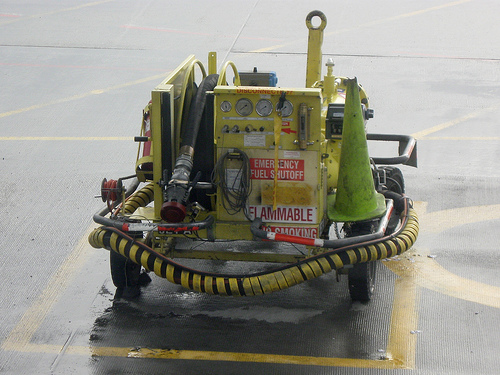 An ounce of prevention is worth a pound of cure. Or in modern terms, a few dollars now can save thousands of dollars tomorrow. Installing and implementing an automated fuel system provides that ounce of prevention for what is likely one of your largest operating expenses – fuel. How many times have you wondered where did all of our fuel go, why can’t I track it, or there must be a better way to manage this. A automated fueling system can significantly improve monitoring, tracking and overall control of your fuel-related operations, from purchasing through dispensing transactions. You get accurate tracking every step of the way to help reconcile fuel usage and avert problems.
An ounce of prevention is worth a pound of cure. Or in modern terms, a few dollars now can save thousands of dollars tomorrow. Installing and implementing an automated fuel system provides that ounce of prevention for what is likely one of your largest operating expenses – fuel. How many times have you wondered where did all of our fuel go, why can’t I track it, or there must be a better way to manage this. A automated fueling system can significantly improve monitoring, tracking and overall control of your fuel-related operations, from purchasing through dispensing transactions. You get accurate tracking every step of the way to help reconcile fuel usage and avert problems.
Use your automated fuel system to:
- Consistently gather data, including odometer and chronometer readings. Regular record-keeping enables earlier detection of potential problems, giving you an opportunity to address them before they grow into large expensive repairs or continue to waste fuel.
- Ensure the data you’re recording is complete, and completely accurate. That reduces simple mistakes due to human error as well as misallocation of information that can skew usage data. By studying the data, you’ll see additional ways to streamline operations so you always know where inventory is, where it’s going, how your individual vehicles and overall fleet are performing.
- Identify additional ways to save labor and money. Once you’re able to clearly see costs and other impacts of fuel usage, you can better evaluate your maintenance cycle and improve your ability to predict future purchasing and maintenance needs. Automation also significantly reduces time spent recording information and creating and producing reports.
- Increase fuel security, virtually eliminating costly losses from theft as well as inadvertent dispensing restriction errors.
Using a hands-free, RFID-based, nozzle to vehicle communication device like Syn-Tech’s FuelMaster Automotive Information Modules (AIM2) can automatically initiate fueling, evaluate vehicle trouble codes, and upload data in real time for easy reporting. You can track information like:
- Vehicle ID.
- Authorized fuel type.
- Quantity limit.
- Run and idle times.
- Engine trouble codes.
- Service hours and hours/miles remaining till next service.
- Travel direction.
- Site ID.
An automated fuel system helps you do more than reconcile fuel usage. It’s a highly cost-effective program that provides broad-scale opportunities to generate savings by streamlining operations and giving you far more control over your fuel supply.
Because important information is always updated regularly, you can use what you learn to make better-informed decisions about all your fuel-related operations, and you’ll be better prepared for reporting or audits or other scrutiny that comes your way.
Photo Credit: Derrick Coetzee
